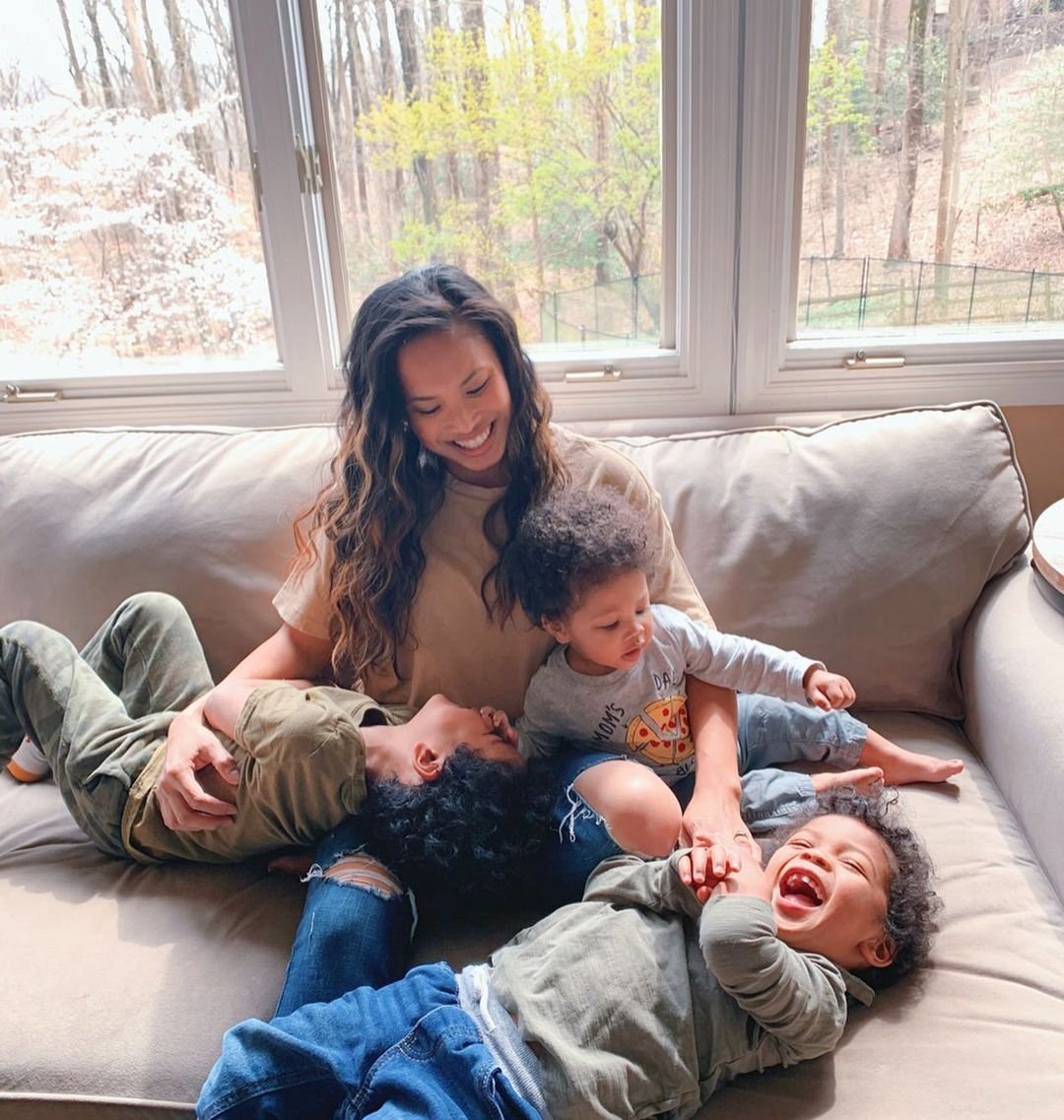How to: 3- Day Potty Training
Let's face it, potty training is one of the dreaded parts of parenting. It takes patience, persistence and commitment for both the parent and the child. Since I'm never one to drag things out, I knew I wanted to try the quick, but intense, 3-day potty training.
As an occupational therapist, I also came to realize that many sensory and socio-emotional aspects are factored into a child’s readiness for potty training. We’ve used the foundation of the 3-day method but modified it to the unique needs of our three sons.There are many different methods and philosophies out there, and you need to find one that fits your own child and family lifestyle.
*Disclaimer — I am not a potty expert! Just a mom of 3 with an occupational therapy background!
Affiliate Disclosure: I may receive a small commission (at no cost to the consumer) on purchases made through the links on this page. Thank you for supporting my blog in this way!
The Timing
Before you start potty-training, know if your child is ready. Age or gender isn't an exact determinant. For example, our first son wasn't ready to start until after he turned 3. Our second child had initiated using the potty once he turned 2, and at 2.5 he was definitely ready.
We started the 3-day process a few weeks back, but because there were too many distractions and not the right level of commitment on our part, it wasn't the right timing. Don't be afraid to re-evaluate if it's not the right time and revisit when it is. It's better to stop completely and restart when you and your child are ready to "rip the band-aid off", than a slow pull that will prolong for weeks/months.
The Book
A friend had recommended the book, Oh Crap! Potty Training by Jamie Glowacki and although the title elicits a chuckle, it's seriously effective. It's a very easy read, cuts right to the chase and plenty of humor mixed in...because comedic relief is definitely needed for this task. I read it cover to cover in 1.5 days in preparation for our training to begin.
The Tools
Technically, all you really need is a toilet and a pack of toddler-sized underwear. However, I found a few other things to be helpful:
A small training potty and/or seat to go on top of your toilet
See “Tip #1” for reasons why starting with the smaller potty on the ground is more beneficial in the beginning stage
A training pad for the couch or whatever furniture you may want to protect from accidents (I just used a small mattress pad from their bed)
A portable, travel potty for when you venture out and still in training mode
A washable pad for the carseat
Disinfectant wipes for accidents
Here are the some that we used:
The Method
For those who have not heard of the 3-day method, you may be thinking "that's impossible to potty train a toddler in 3 days". It's not! Realistically, it may take more than 3 days for them to be fully independent and no accidents, but the foundational skills will have been taught and becoming more consistent by 3 days. The book lays out step-by-step what you should look for, how to know you've accomplished that step and ready to advance, and how to troubleshoot if you run into issues.
Disclaimer: This method takes HIGH COMMITMENT FOR QUICK RESULTS.
This means you need to clear your schedule from anything important, possibly including playdates, plan to hunker down and stay home, and focus on just this task. Obviously you'll need to go to the bathroom yourself and make a meal, but this is your main job for the next few days. Other than their own readiness, your child's success with this mostly dependent on your commitment to consistency. Here's a rough idea of how it goes:
Step #1: Time to Get Naked
Pick a day to ditch the diapers. From that point on, no more diapers/pull-ups during the day. If you are not ready to tackle night-time training yet (that takes much longer), then don't throw them out completely. Prepare them for this by talking about it leading up to that day. Go and pick out underwear together that they can be excited about! However, they won't be wearing the undies right away.Contrary to what you may think, you are not going straight to underwear. Instead, it's commando until they're consistently sitting on the potty for #1 and #2.
Reason for going commando:
Both you and your child need to identify the signals/cues that they are ready to go or “void”.
By covering them up with underwear or pants, you both may miss the cues.
The underwear or pull-up will feel similar to a diaper, which may make them forget that they need to go to the bathroom to void.
Commando eliminates the need to manipulate clothes, making accidents easier clean-up and less laundry
So when they would wake up, I'd say "It's daytime, take off your pull-up!" And from that moment on, I'm obsessively watching their their whole body language for signs that they need to go. When they start doing a little dance, holding onto their crotch etc., that’s when you gently, but swiftly, lead them by hand to the toilet.
TIP #1: This is where the small potty comes in handy.
When they’re in a hurry, it's physically easier for them to get on/off from the smaller toilet than climbing onto a regular sized toilet, even if it has a stool.
In the beginning stages, you may not have but a few seconds to get them to the potty. By bringing the potty closer to where they are, the probability for success is higher! As they notice their cues earlier and able to control the urge during transit to the potty, I would move the potty closer to the bathroom and eventually eliminating it all together. Think of it as a stepping stone or bridging the gap.
TIP #2: Only naked from the waist down
If you or your child feels weird about being completely naked, add an oversized shirt that comes below their waist. But remember to be vigilant about watching for cues!
Step Two: Going Commando With Pants
Once they are consistently going to the potty by understanding their own cues, add in pants. NOT underwear. The main reason for just doing pants: we don't want to create that similar feeling of a diaper that hugs their bum, or else they may regress. Also, it is easier to manipulate just the pants instead of pants AND underwear. If adding pants means they start having accidents, go back to step 1 until they're consistent again.
Tip: Use easy-up/down pants that have an elastic waist. Putting on jeans or anything with a button/zipper will make it more difficult for them.
Step Three: Finally Add the Undies
Now that they are doing well with going to the bathroom, sitting on the pot, pulling their drawers down and going...they are ready for undies! I opted for boxer-briefs to make it feel even less similar to a pull-up or diaper. Make sure to buy a good amount of them for these trial-and-error days.
Step Four: Venturing Out
When you feel confident about going out, make it a short trip at first, maybe 10-15 min drive max. We use a portable potty so many times either behind our car or in the back of our SUV for emergency stops. Here are some rules of thumb that we followed:
Plan out where you are going to go and ensure there is a bathroom available.
Put into practice of having them use the potty before they leave. **As a pelvic floor therapist, I will say you should never encourage forced voiding. Instead, ask them to sit and if it naturally comes, great. If not, don't tell them to "push it out".
Use a "piddle pad" in their car/booster seat to make easy clean-up for accidents
If there is no bathroom available, or needing to make an emergency roadside pitstop, keep a portable/foldable toilet. This product has been a God-send!
If you've read my post about traveling with kids by car or by plane, you know I'm all about being prepared whenever you're away from home...especially when you're potty training. My car functions as an oversized diaper bag for our 3 kids.
My car essentials:
At least 2 changes of clothes
Piddle pad
Travel potty (no special liners needed, just small trash bags or plastic grocery bags)
Paper towels, hand sanitizer, disinfectant wipes
A Few Wrap Up-Up / Take-Away Notes
It's usually not a straight shot to the finish line. There will be setbacks, maybe poop on the floor, lots of laundry and probably some tears. Small steps backward don't mean a complete failure. But stay strong and trust the process.
Avoid getting upset if they have an accident. This is emotionally hard for them too. Even if there is poop or pee in places they aren't supposed to be...take a deep breath. You don't need to say "it's ok", but be matter of fact like "We pee in the potty", let them help you clean up and move on.
Sometimes kids are great at going #1 but withhold going #2, and sometimes it takes forever to put it all together. Go at their pace to reduce the stress on all parties!
Being able to poop is step one, becoming completely independent with wiping is a whole other ball of wax. The same goes for nighttime training, so take it one stride at a time.
The book discourages reward systems...but I'm all for it. M&Ms and small prizes got us through this journey. Do what works for you all!
Give yourself and your little one grace! This is tough sh*t...I mean that on many levels
How did your potty training experience go? Any tips? Good luck to you mamas, dadas and caregivers who are on this journey. May the odds be ever in your favor!
xo, Carolyn
Hey, I’m Carolyn
This space is dedicated to caring for ourselves, without compromise.
I’m a working mom of three young boys (all under seven — it’s chaos around here) and run a therapy practice catering to postpartum recovery. Welcome to my little corner of the internet, dedicated to helping women reimagine motherhood and find balance in this new stage of life.
Follow Along: @_carolyncelia








